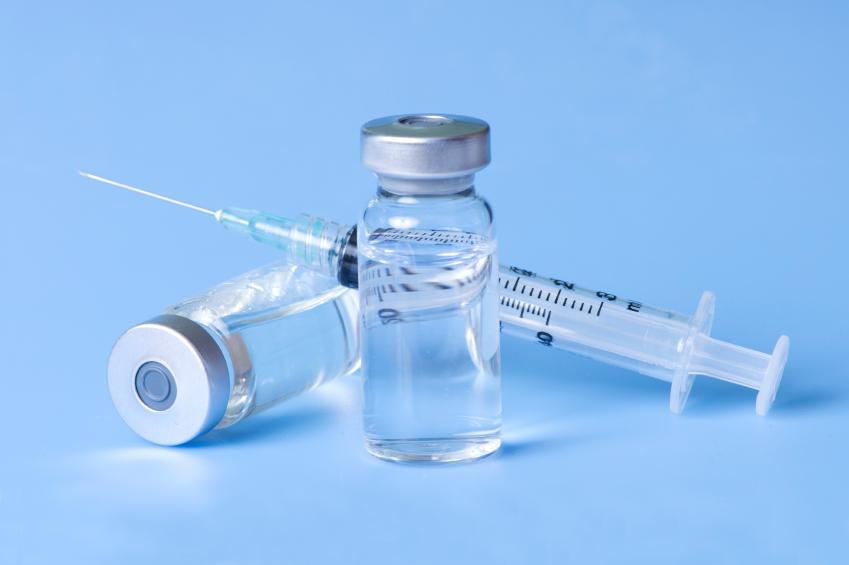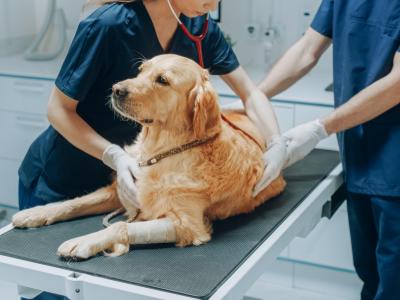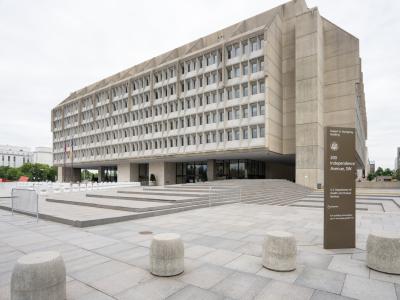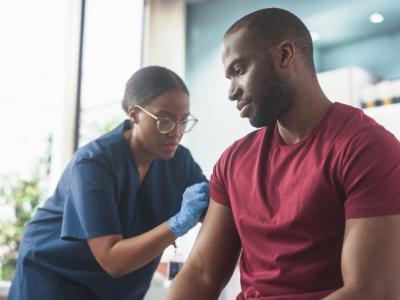Researchers today published the first two phase 1 trial studies on VSV-EBOV vaccine, showing good immune responses that helped with dose selection for trials under way in Liberia and Guinea and no serious safety concerns.
The vaccine caused some expected reactions such as fever, but also triggered arthritis and rash in a few patients, which responders will need to keep in mind when using Ebola vaccines in outbreak settings, scientists said. The teams published their findings the New England Journal of Medicine (NEJM).
Vaccine trial findings
VSV-EBOV uses an Ebola virus protein spliced into a vesicular stomatitis virus (VSV). It was developed by scientists at the Public Health Agency of Canada and is licensed by NewLink Genetics and Merck. Two research teams conducted the phase 1 trials, one led by US researchers that studied the vaccine at Walter Reed Army Institute of Research (WRAIR) and the National Institutes of Health (NIH) Clinical Center and one headed by German and Swiss researchers that took place in Germany, Switzerland, Gabon, and Kenya.
The Swiss researchers had temporarily paused their part of the trial in mid December to look into reports of mild joint pain in some of the study participants.
Initial results from a phase 2/3 trial of VSV-EBOV and ChAd3, the other vaccine furthest along in testing, that launched in Liberia in early February suggested that the vaccines are safe. The findings were released by the National Institute of Allergy and Infectious Diseases (NIAID) in late March, clearing the way for the phase 3 part of the trial to assess efficacy.
A ring vaccination trial of VSV-EBOV launched in Guinea in early March. The goal is to see if vaccinating contacts of cases could create a buffer of protection to curb the spread of the virus. The vaccine is also being offered to frontline healthcare workers. A safety and efficacy trial of VSV-EBOV slated for Sierra Leone was expected to begin in either late March or early April, according to a recent update from NIAID, one of the trial sponsors.
US trial results
The US study launched in October and consisted of two placebo-controlled, double-blind dose-escalation trials enrolling 26 people at each of the two sites. The other study launched in November and involved three open-label dose-escalation trials and one randomized double-blind controlled trial, enrolling 158 people among the four locations.
Subjects in the US studies received placebo or one of two VSV-EBOV doses—3 million or 20 million plaque-forming units (PFU). The WRAIR volunteers received a single dose, and the NIH group got a prime-boost regimen at days 0 and 28. Participants at the European and African sites received single doses ranging from 300,000 to 50 million PFU.
In the US study, researchers found no safety concerns, with the most common adverse events being injection-site pain, myalgia, and fatigue. About 30% of those who received the vaccine had mild to moderate fever, but all but one case resolved within 24 hours.
Immune responses against the Ebola Zaire glycoprotein were seen in both groups, but they were threefold or more higher in the group that received the higher dose. Transient VSV viremia was seen in all of the subjects.
Richard Davey, MD, who helped lead the NIH trial, said in an NIH statement today, "The prompt, dose-dependent production of high levels of antibodies following a single injection and the overall favorability of this vaccine make VSV-EBOV a promising candidate that might be particularly useful in outbreak interventions."
The NIH said that since VSV-EBOV contains a live attenuated VSV, self-limiting fevers following immunization are not unexpected.
The researchers concluded that the findings supported further development of VSV-EBOV at the higher dose.
International trial findings
In the other study, no serious adverse events were reported either, but the team found frequent mild-to-moderate, early, transient reactions to the vaccine. They reported that up to 35% of vaccinees had fever, with tests showing vaccine viremia in 103 of 110 people who received doses of 3 million PFU or more.
In the second week after injection, arthritis was reported in 11 of 51 participants in Geneva, 1 in Germany, and 1 in Kenya. Pain lasted about 8 days. Three of the Geneva subjects with arthritis also had a mild maculopapular rash on the fingers or toes that resolved over 1 to 2 weeks. Researchers found VSV in one synovial fluid aspirate and in skin vesicles from two people, which they said shows peripheral virus replication the second week after immunization.
The NIH said that after the arthritis reactions surfaced at the European study sites, the US study participants were asked if they had any new joint pain, and none of them reported any.
Scientists said they saw a dose-response pattern in adverse effects (300,000 PFU and 3 million PFU) in Gabon, but they didn't see a link to the higher doses at the three other study sites. They noted that the symptoms were of short duration and responded to symptomatic treatment, which could help with acceptance of the vaccine, and they said vaccine-induced fever should be expected when the vaccine is administered to contacts of Ebola patients.
Similar antibody titers were seen in all participants, but neutralizing antibody titers were significantly higher in those who got the higher doses.
The researchers concluded that their findings show that VSV-EBOV is immunogenic but reactogenic, and that the VSV dissemination in the joints and skin of some patients should be weighed against the vaccine's potential benefits when used to help control outbreaks. They noted that their investigations have raised awareness about the events expected with the use of vaccines and that the findings have helped drive safety changes in protocols for phase 2 and phase 3 studies.
World Health Organization experts have suggested that different vaccines and different immunization strategies may be needed to battle West Africa's Ebola epidemic or any future outbreaks. Its advisory group picked VSV-EBOV for the Guinea trial because it had a solid safety profile, provoked an appropriate immune response, and was available in enough doses in time for the trial. Also, studies have suggested that VSV-EBOV would require only one dose, compared with two doses that may be needed for ChAd3.
See also:
Apr 1 N Engl J Med abstract on American trials
Apr 1 NIH press release
Apr 1 N Engl J Med abstract on European and African trials
Mar 5 CIDRAP News story "Ebola ring vaccination trial set for Guinea launch"
Mar 27 CIDRAP News story "Two Ebola vaccines shown safe as next step pondered"

















